Building upon the example below, you can add a function for prediction in the NeuralNetwork class:
def predict(self, image):
return np.argmax(self.__feedforward(image.astype(bool).astype(int)))
Once you've trained your neural network successfully, you can predict an unknown digit with upto 97% accuracy with:
prediction = NN.predict(image)
Excerpted from Neural Networks - Getting Started: A Simple ANN with Python. The original authors were cᴏʟᴅsᴘᴇᴇᴅ and dontloo. Attribution details can be found on the contributor page. The source is licenced under CC BY-SA 3.0 and may be found in the Documentation archive. Reference topic ID: 2709 and example ID: 9069.
The code listing below attempts to classify handwritten digits from the MNIST dataset. The digits look like this:

The code will preprocess these digits, converting each image into a 2D array of 0s and 1s, and then use this data to train a neural network with upto 97% accuracy (50 epochs).
"""
Deep Neural Net
(Name: Classic Feedforward)
"""
import numpy as np
import pickle, json
import sklearn.datasets
import random
import time
import os
# cataloguing the various activation functions and their derivatives
def sigmoid(z):
return 1.0 / (1.0 + np.exp(-z))
def sigmoid_prime(z):
return sigmoid(z) * (1 - sigmoid(z))
def relU(z):
return np.maximum(z, 0, z)
def relU_prime(z):
return z * (z <= 0)
def tanh(z):
return np.tanh(z)
def tanh_prime(z):
return 1 - (tanh(z) ** 2)
def transform_target(y):
t = np.zeros((10, 1))
t[int(y)] = 1.0
return t
class NeuralNet:
def __init__(self, layers, learning_rate=0.05, reg_lambda=0.01):
self.num_layers = len(layers)
# initialising network parameters
self.layers = layers
self.biases = [np.zeros((y, 1)) for y in layers[1:]]
self.weights = [np.random.normal(loc=0.0, scale=0.1, size=(y, x))
for x, y in zip(layers[:-1], layers[1:])]
self.learning_rate = learning_rate
self.reg_lambda = reg_lambda
# initialising network activation function
self.nonlinearity = relU
self.nonlinearity_prime = relU_prime
def __feedforward(self, x):
''' Returns softmax probabilities for the output layer '''
for w, b in zip(self.weights, self.biases):
x = self.nonlinearity(np.dot(w, np.reshape(x, (len(x), 1))) + b)
return np.exp(x) / np.sum(np.exp(x))
def __backpropagation(self, x, y):
'''
Perform the forward pass followed by backprop
:param x: input
:param y: target
'''
weight_gradients = [np.zeros(w.shape) for w in self.weights]
bias_gradients = [np.zeros(b.shape) for b in self.biases]
# forward pass - transform input to output softmax probabilities
activation = x
hidden_activations = [np.reshape(x, (len(x), 1))]
z_list = []
for w, b in zip(self.weights, self.biases):
z = np.dot(w, np.reshape(activation, (len(activation), 1))) + b
z_list.append(z)
activation = self.nonlinearity(z)
hidden_activations.append(activation)
t = hidden_activations[-1]
hidden_activations[-1] = np.exp(t) / np.sum(np.exp(t)) # softmax layer
# backward pass
delta = (hidden_activations[-1] - y) * (z_list[-1] > 0)
weight_gradients[-1] = np.dot(delta, hidden_activations[-2].T)
bias_gradients[-1] = delta
for l in range(2, self.num_layers):
z = z_list[-l]
delta = np.dot(self.weights[-l + 1].T, delta) * (z > 0)
weight_gradients[-l] = np.dot(delta, hidden_activations[-l - 1].T)
bias_gradients[-l] = delta
return (weight_gradients, bias_gradients)
def __update_params(self, weight_gradients, bias_gradients):
''' Update network parameters after backprop step '''
for i in xrange(len(self.weights)):
self.weights[i] += -self.learning_rate * weight_gradients[i]
self.biases[i] += -self.learning_rate * bias_gradients[i]
def train(self, training_data, validation_data=None, epochs=10):
''' Train the network for `epoch` iterations '''
bias_gradients = None
for i in xrange(epochs):
random.shuffle(training_data)
inputs = [data[0] for data in training_data]
targets = [data[1] for data in training_data]
for j in xrange(len(inputs)):
(weight_gradients, bias_gradients) = self.__backpropagation(inputs[j], targets[j])
self.__update_params(weight_gradients, bias_gradients)
if validation_data:
random.shuffle(validation_data)
inputs = [data[0] for data in validation_data]
targets = [data[1] for data in validation_data]
for j in xrange(len(inputs)):
(weight_gradients, bias_gradients) = self.__backpropagation(inputs[j], targets[j])
self.__update_params(weight_gradients, bias_gradients)
print("{} epoch(s) done".format(i + 1))
print("Training done.")
def test(self, test_data):
test_results = [(np.argmax(self.__feedforward(x[0])), np.argmax(x[1])) for x in test_data]
return float(sum([int(x == y) for (x, y) in test_results])) / len(test_data) * 100
def dump(self, file):
pickle.dump(self, open(file, "wb"))
if __name__ == "__main__":
total = 5000
training = int(total * 0.7)
val = int(total * 0.15)
test = int(total * 0.15)
mnist = sklearn.datasets.fetch_mldata('MNIST original', data_home='./data')
data = zip(mnist.data, mnist.target)
random.shuffle(data)
data = data[:total]
data = [(x[0].astype(bool).astype(int), transform_target(x[1])) for x in data]
train_data = data[:training]
val_data = data[training:training+val]
test_data = data[training+val:]
print "Data fetched"
NN = NeuralNet([784, 32, 10]) # defining an ANN with 1 input layer (size 784 = size of the image flattened), 1 hidden layer (size 32), and 1 output layer (size 10, unit at index i will predict the probability of the image being digit i, where 0 <= i <= 9)
NN.train(train_data, val_data, epochs=5)
print "Network trained"
print "Accuracy:", str(NN.test(test_data)) + "%"
This is a self contained code sample, and can be run without any further modifications. Ensure you have numpy and scikit learn installed for your version of python.
 What should I do next for number recognition?
What should I do next for number recognition?